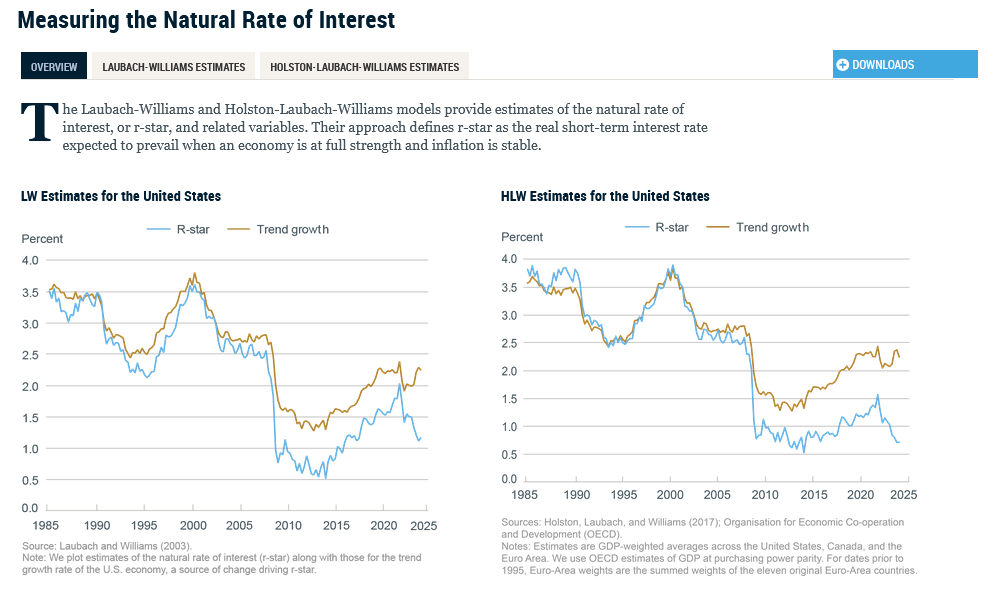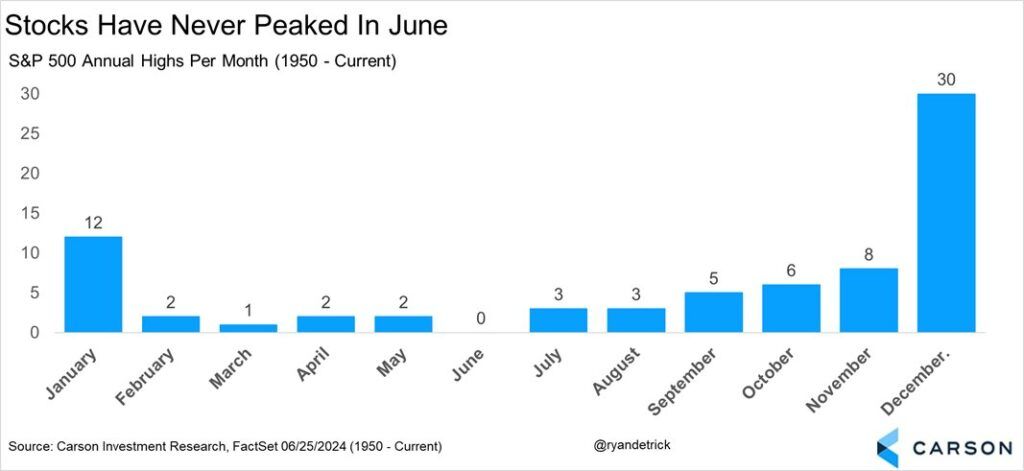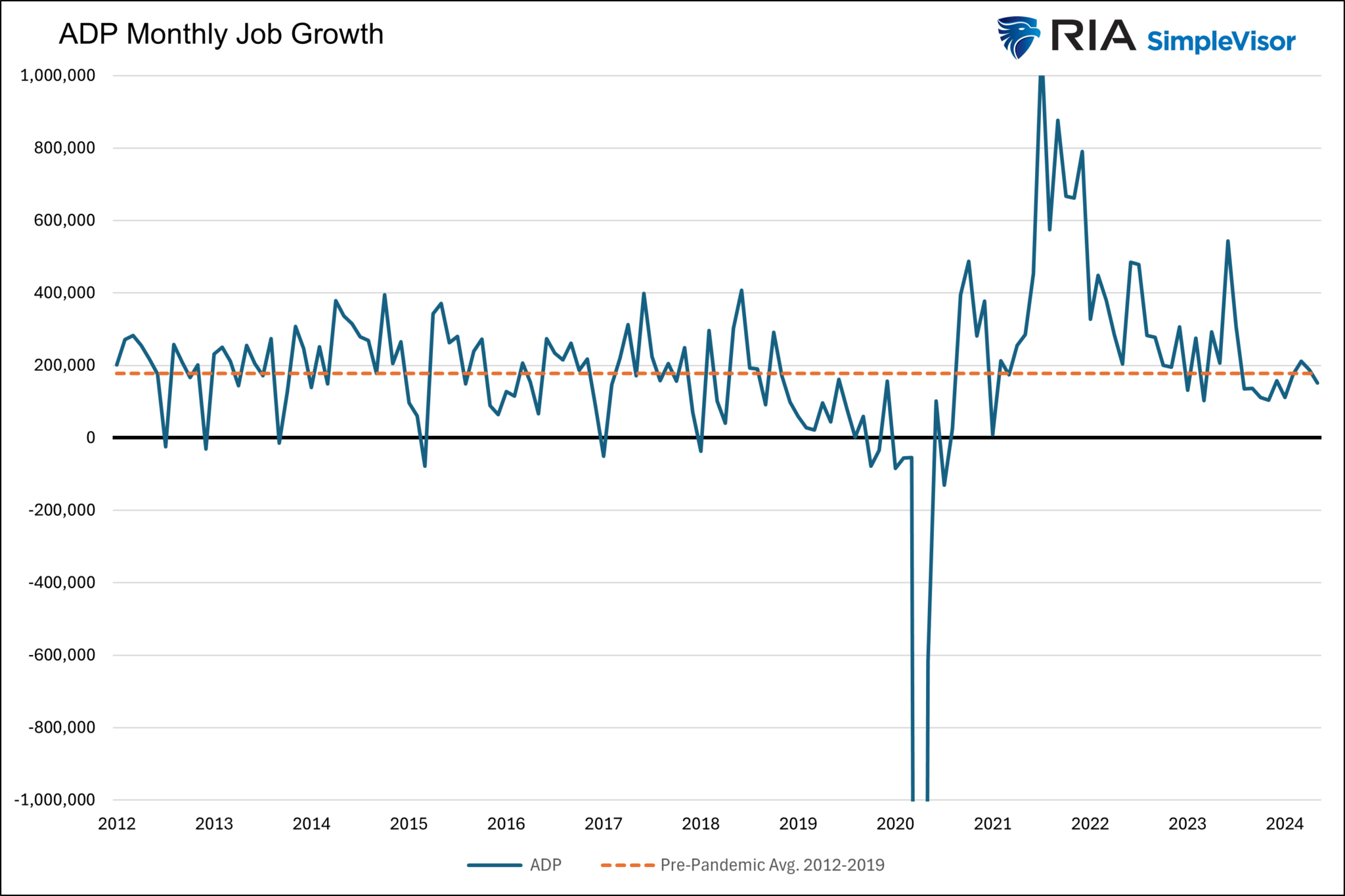As we shared on Monday, The Fed Funds Rate Is Too High. The biggest reason is the Fed fears another round of inflation. Therefore, they try to ensure it doesn’t happen via tight money policy. Second, federal deficits have been larger than average, causing a jump in Treasury debt issuance. This is primarily the function of an extra $500 billion a year in interest expenses due to higher interest rates. However, significant deficit spending certainly does not help the cause. Lastly, there is R Star, an explanation many may not have heard of.
R Star is the real neutral rate of interest that balances the economy. Unfortunately, there is no way to calculate an economy’s R Star. Hence, managing interest rates to the figure is a guessing game for the Fed. Some economists and bond investors believe the R Star has increased over the past four years due to the pandemic. Therefore, bond yields should be higher if the natural economic growth rate is higher.
On Wednesday, New York Fed President Williams debunks the idea of a higher R Star. He states:
“Although the value of R Star is always highly uncertain, the case for a sizable increase in R-Star has yet to meet two important tests.”
The first is the “interconnectedness” of R Star across countries. There is no evidence that it is rising in Europe or other developed nations. Actually, it is likely declining in Europe, the UK, and China. “Second, any increase in R Star must overcome the forces that have been pushing R Star down for decades.” Have productivity and demographic trends suddenly changed for the better? Again, there is no evidence this is occurring. The two Fed economic models below show that R Star remains on the same trend for the last 40 years.
What To Watch
Economy
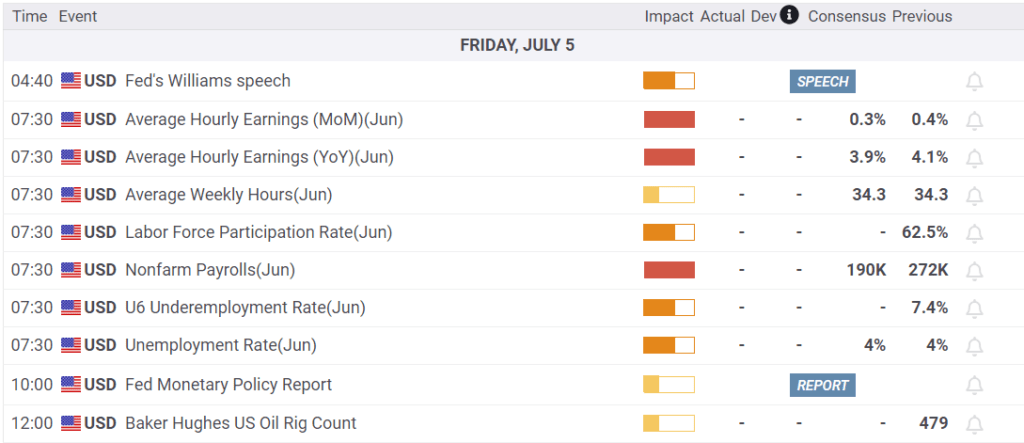
Market Trading Update
Last week, we noted that we were about to enter Q2 earnings season.
“Speaking of earnings, analysts have been extremely busy over the last 30 days, slashing estimates. In June, Q2 earnings estimates for the S&P 500 index were cut by $5/share to the lowest level yet. Interestingly, while Wall Street continues to boast confidence in rising asset prices, they have cut estimates from $214/share in March last year to just $193/share. Such suggests a dichotomy between expected market performance and the economy, which is where earnings come from.”
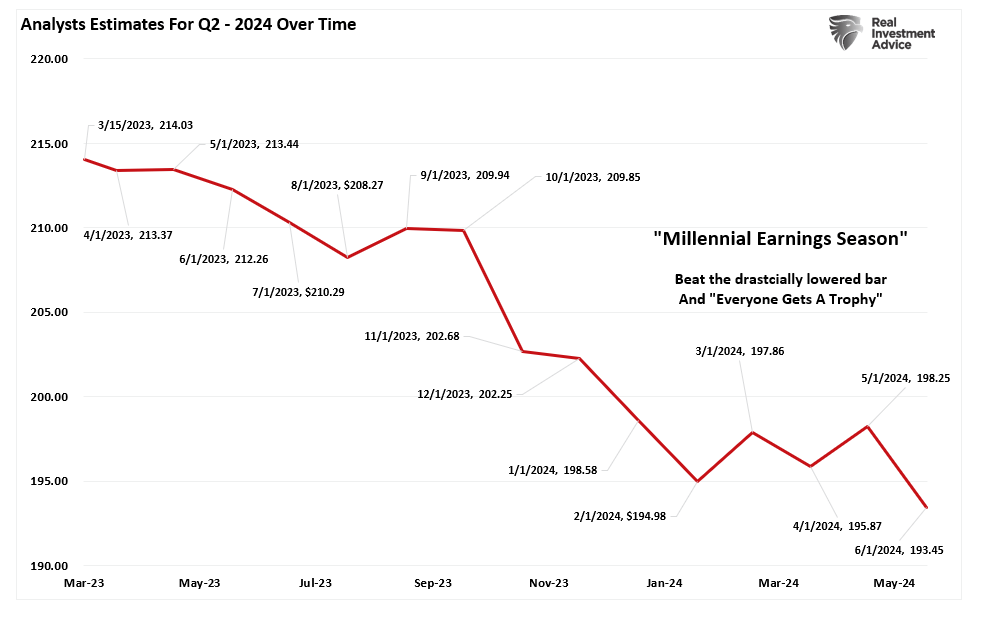
For a deeper discussion on Q2 earnings, read “Earnings Bar Lowered.”
As noted, I am using Wednesday’s closing data for the current analysis before I head out for vacation. First, while markets hit an all-time high, I wouldn’t read much into it. Trading volume was light due to the shortening of the week for the Independence Day holiday week. Secondly, while the market did make a new high, it remains a marginal new high tracking along the 20-DMA, which continues to act as bullish support.
The market remains overbought short-term, but the recent rally is close to flipping the short-term MACD “sell signal.” Such would suggest that while the overbought condition could limit the upside, the market will likely try to climb higher over the next two weeks. Continue to manage portfolio risk accordingly, but the bullish trend remains intact.
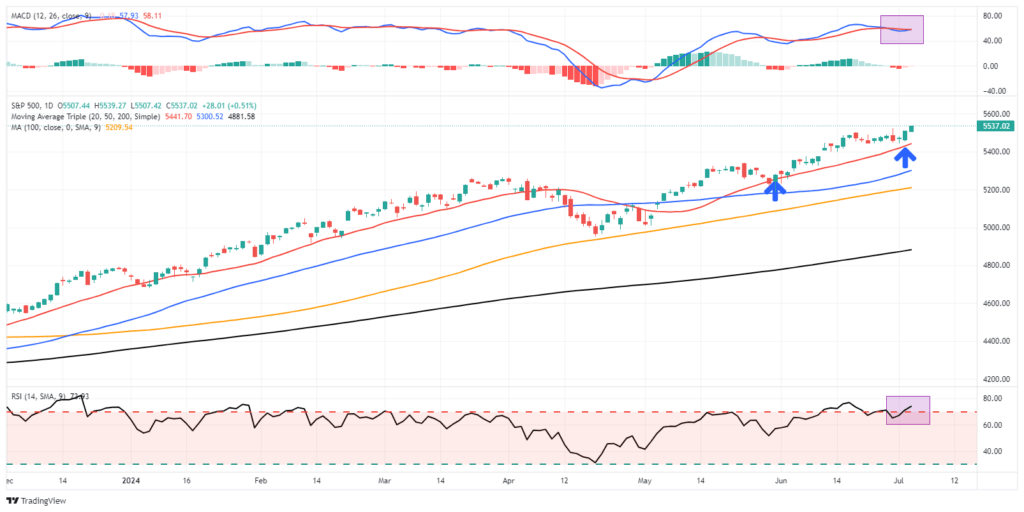
As noted, investors remain very optimistic about the market currently. Net bullish sentiment remains elevated, volatility is suppressed, and “bad news remains good news” for now.

Did Stocks Peak In June?
No, at least according to the last 75 years of history. The graph below, courtesy of Ryan Detrick of Carson, shows that the S&P 500 has never peaked for the year in June. However, not surprisingly, the odds of an annual high steadily increase from here.
ADP Job Growth
ADP job growth, calculated from actual employment data and not surveys like the BLS, shows that the economy added 150k jobs last month. This is the lowest monthly growth since January. For context, ADP job growth averaged +178k from 2012 through 2019. Over the last twelve months, it has averaged 194k. The current reading (150k) is below both long-term and short-term trends but not overly concerning. That is not to say that the lower trend won’t continue, thus raising concerns in the future.
Tweet of the Day
“Want to achieve better long-term success in managing your portfolio? Here are our 15-trading rules for managing market risks.”



